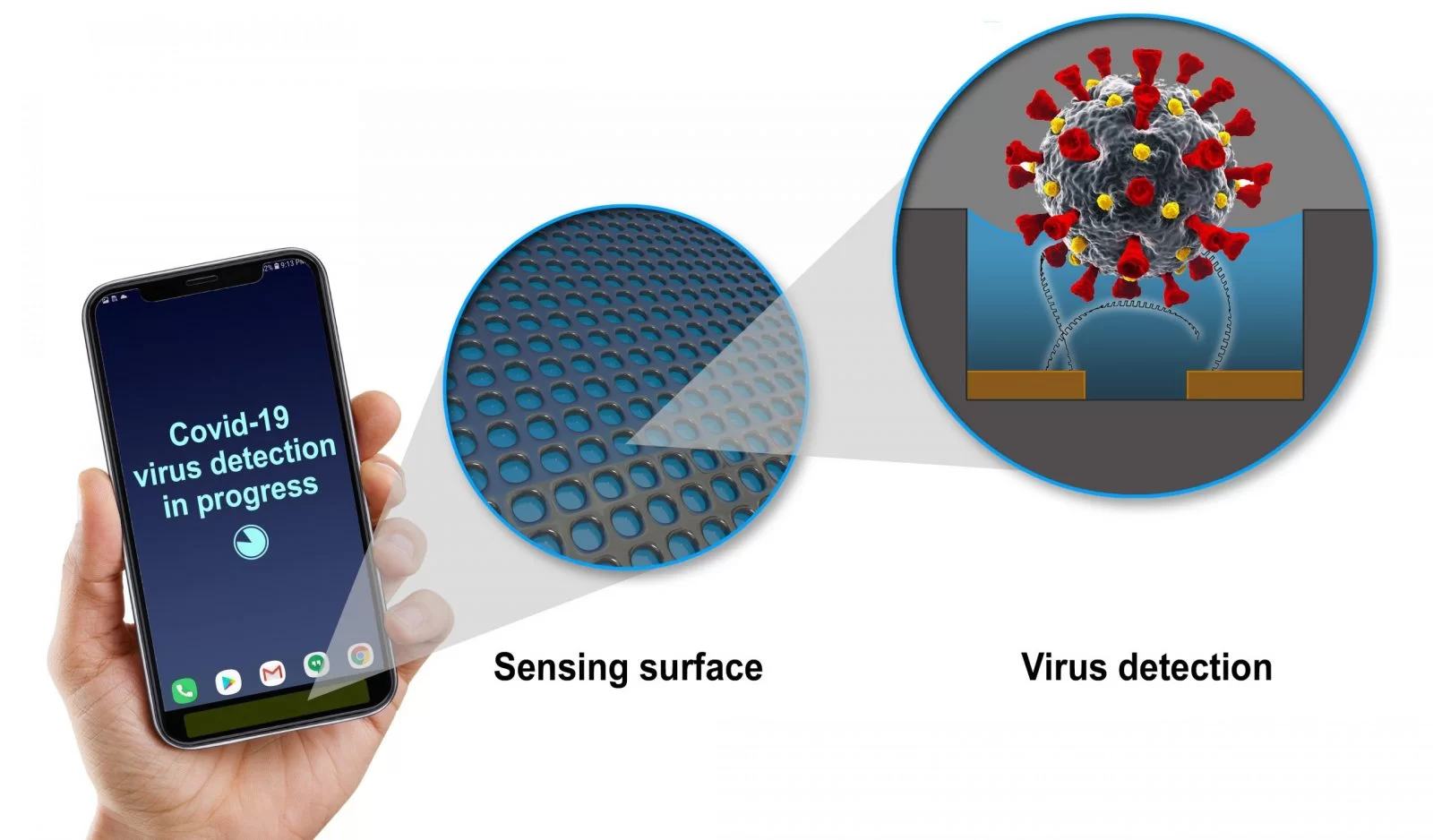One of the most daunting aspects of the COVID-19 pandemic involves tracking the spread of the microscopic, airborne coronavirus causing the disease. But what if you could spot its presence via your smartphone?
It’s not as farfetched as it sounds. GE researchers are working on a sensor smaller than a fingertip that could find viruses and pathogens in the air. Led by Radislav Potyrailo, a principal scientist at GE Research in Niskayuna, New York, the team received a two-year research grant from the National Institutes of Health to build the tiny device.
The group’s success could mean that, in the future, smartphones and smartwatches equipped with such sensors could help users detect not only the SARS-CoV-2 virus causing COVID-19, but potentially other pathogens and irritants. “One of the first lines of defense against any virus is avoiding exposure, which is easier said than done when you can’t see it,” Potyrailo says. “Through our project with the NIH, we are developing a sensor small enough to embed in a mobile device that could detect the presence of the COVID-19 virus.”
The project will draw on GE’s years of experience with developing industrial sensors that can detect minute amounts of gasses and chemicals in the environment in the presence of dust and other common chemical and biological contaminants. Like a digital bloodhound, the technology is programmed to isolate and identify a specific pathogen while excluding the interference of other particles. “The holy grail is to detect a single virus particle,” Potyrailo says.
The finished project will produce a microchip smaller than a dime with nanowells, or tiny pores, that can only be activated by a particular molecule — in this case, a molecule from the coronavirus causing COVID-19. “In each of those nanowells there are bioreceptors that are designed to recognize only the virus particle they were designed for,” Potyrailo says. “If some flu particle or pollen or bacterium appears, it won’t be recognized. It’s like a lock and key.”

